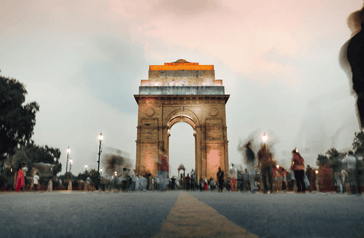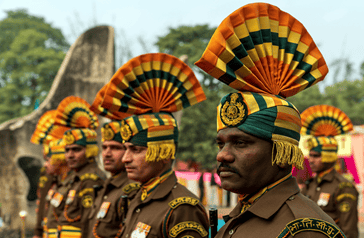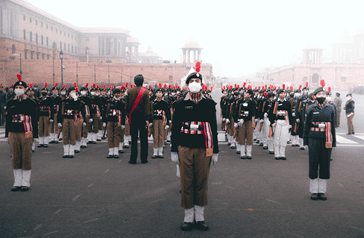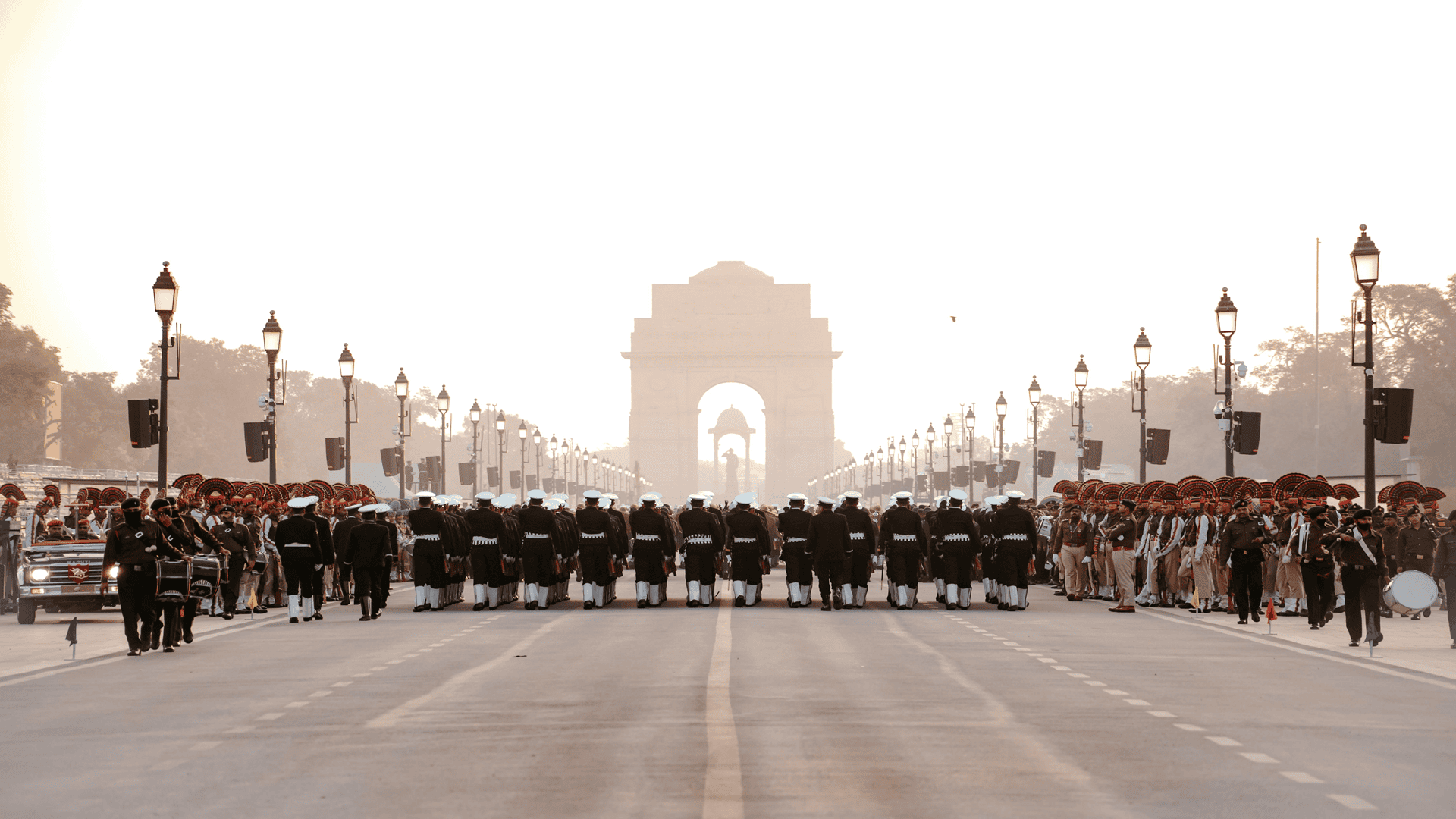How to Join the Indian Armed Forces in 2025
Key Highlights
- Various entry routes for Army, Navy, and Air Force
- Step-by-step process for Agniveer recruitment
- Eligibility, preparation, and medical standards
- Admit card download steps and key dates
Indian Army, Navy, Air Force & Agniveer Scheme
Joining the Indian Armed Forces is a proud and honourable decision. Whether you are aiming to join the Indian Army, Navy, or Air Force through regular entries or under the Agniveer scheme, 2025 brings fresh opportunities. This guide covers all you need to know—from eligibility and preparation to admit cards and official portals.
Entry Routes in 2025
Each force has different pathways based on education and age:
- Indian Army: NDA, TES, Agniveer, recruitment rallies
- Indian Navy: Agniveer (SSR/MR), 10+2 B.Tech, INET
- Indian Air Force: Agniveer Vayu, NDA, AFCAT
Why Join the Indian Armed Forces?
Indian Navy
Protects maritime borders, supports disaster relief, and operates high-tech equipment. It offers global exposure and a disciplined lifestyle.
Entry-Level Ranks: Seaman (sailor), Sub Lieutenant (officer)
Indian Army
One of the largest ground forces globally. Offers leadership, adventure, and the chance to serve in diverse terrains.
Entry-Level Ranks: Sepoy (soldier), Lieutenant (officer)
Indian Air Force
Ensures airspace security and operates cutting-edge aircraft. Known for speed, skill, and technical mastery.
Entry-Level Ranks: Aircraftman (non-officer), Flying Officer (officer)
Life After Selection: Training in Defence Academies
After selection, candidates join training academies for rigorous preparation:
- NDA (Khadakwasla) for joint training before service-specific specialisation
- IMA (Army), INA (Navy), AFA (Air Force) for advanced military training
- Training includes physical drills, military ethics, leadership tasks, and academic subjects
This phase builds discipline, mental resilience, and team spirit—qualities essential for military life.
Documents Required for Application and Selection
Before applying, ensure these are ready:
- Class 10 and 12 mark sheets
- Aadhaar card or valid photo ID
- Passport-size photographs
- Domicile/residence certificate
- Caste certificate (if applicable)
- Medical fitness certificate (for later stages)
Keep original and scanned copies handy while applying.
Understanding the Agniveer Scheme
Agniveer is a four-year short-term service opportunity in the Army, Navy, or Air Force. After service, 25 per cent may be selected for permanent roles.
Key Benefits
- Monthly salary starting at ₹30,000 (increasing annually)
- Risk and hardship allowances
- ₹11 lakh Seva Nidhi on exit (tax-free)
- Preference in CAPF, state police, and public/private jobs
- Exit with nationally recognised skill certificates
Ideal for youth seeking experience, discipline, and a career foundation.
Eligibility Criteria at a Glance
| Force | Qualification | Age | Gender | Entry Types |
|---|---|---|---|---|
| Indian Army | 10th or 12th Pass | 17.5–21 yrs | Male & Female (some roles) | Agniveer, NDA, TES |
| Indian Navy | 10+2 with PCM | 17–21 yrs | Male & Female | Agniveer SSR/MR, B.Tech Entry |
| Indian Air Force | 10+2 with PCM | 17–21 yrs | Male & Female | Agniveer Vayu, NDA, AFCAT |
PCM = Physics, Chemistry, Mathematics
Preparing for Armed Forces Selection
Educational Readiness
- Focus on Class 10 & 12 NCERT subjects
- Practise past years’ question papers
- Use online mock tests for NDA, AFCAT, Agniveer exams
- Build general knowledge and current affairs awareness
Physical Fitness
- Start training 3–6 months before tests
- Daily running (1.6 km), push-ups, sit-ups, chin-ups
- Build stamina, flexibility, and strength
Health and Medical Readiness
- Maintain a healthy weight and BMI
- Good vision and hearing are essential
- No history of chronic illnesses or major surgeries
- Eat balanced meals and avoid tobacco or supplements
Your mind, body, and lifestyle should align with defence standards.
How to Join Agniveer in 2025: Step-by-Step
- Online Registration
- Visit the official website of your chosen force
- Fill in personal and academic details
- Upload the required documents
- Download Admit Card
- Log in to your account on the official site
- Use registration ID and password
- Download and print your admit card
- Written Test
- Subjects: Maths, Reasoning, English, GK
- Multiple-choice questions
- Physical and Medical Test
- Running, push-ups, height/weight check
- Eye and full-body health check-up
- Final Merit List
- Based on performance in all stages
How to Download Admit Card 2025
- Visit the official website:
- Find the admit card download section
- Log in using your credentials
- Download and print your admit card
Always use trusted links. Avoid third-party websites.
Key Dates for 2025 (Tentative)
- Applications: Jan to Mar 2025
- Admit Cards: Apr to Jun 2025
- Written Exams: May to Jul 2025
- Physical Tests: Jul to Sep 2025
Stay updated by visiting official websites regularly.
Career After 4 Years as an Agniveer
- 25 per cent may be absorbed into permanent service
- Exit package of approx ₹11 lakh (Seva Nidhi)
- Government job priority in CAPF, police
- The private sector is ready with certified skills and discipline
Agniveer service builds employability in both the public and private sectors.
NDA vs Agniveer: A Quick Comparison
| Feature | NDA | Agniveer |
| Duration | 3 years at NDA + 1 year pre-commission | 4 years total service |
| Role | Officer (Commissioned) | Non-officer ranks |
| Age Limit | 16.5 – 19.5 years | 17.5 – 21 years |
| Salary | Stipend during training, full pay later | Starts at ₹30,000/month |
| Career Path | Long-term military career | Short-term with option for permanent |
Final Thoughts: A Step Towards Service
Joining the Indian Armed Forces is not just a career move—it is a way to serve the nation with pride. Whether you choose the Army, Navy, Air Force, or Agniveer route, preparation is key. Stay updated, stay fit, and stay focused.
Visit only official portals, avoid misinformation, and take the first step towards a life of honour and growth. Jai Hind!
FAQs
1. What is the age limit for Agniveer Army 2025?
You must be between 17.5 and 21 years of age at the time of enrolment. Check the official notification for the exact cutoff date.
2. Can girls apply for Agniveer in 2025?
Yes, female candidates can apply for select roles in the Army, Navy, and Air Force under Agniveer. Check official websites for gender-specific eligibility.
3. What is the difference between NDA and Agniveer?
NDA is for permanent officer-level roles after Class 12. Agniveer is for four years of service in soldier or sailor roles. NDA leads to a career as a commissioned officer, while Agniveer is a short-term opportunity with skill development.
4. Is there a permanent job after Agniveer?
Only 25 per cent of candidates may be retained based on merit and performance. Others exit with Seva Nidhi and job preferences in other sectors.
5. How tough is Agniveer training?
It is rigorous—physically and mentally. Includes drills, combat training, fitness, and discipline. With consistent prep, many candidates adapt successfully.
6. How to apply to more than one force?
Apply separately on the official portals of the Army, Navy, or Air Force. Ensure you meet each force’s eligibility criteria.
7. What is the starting salary for Agniveers?
Starts at ₹30,000 per month. Increases each year. In-hand salary is lower due to the contribution toward Seva Nidhi, which is returned with interest.
8. Where to check the Agniveer admit card status?
Use the official websites mentioned earlier. You can also follow government job portals like Sarkari Result, but always verify with the original source.
Related Articles

Life as a defence brat in India is unlike any other. Shaped by cantonment culture, discipline, adaptability, and resilience, every fauji kid carries unforgettable experiences and traits that set them apart.
Key Highlights
- Punctuality is your default mode. Time is sacred in a defence household.
- Answering “Where are you from?” is tricky. Home is everywhere and nowhere.
- You adapt like a pro; new schools, new cities, no problem.
- Cantonment culture is your comfort zone: canteens, mess halls, and parade grounds feel like home.
- Resilience is second nature. Goodbyes, relocations, and change are part of your DNA.

Part 1 explores the first 14 regiments of the Indian Army — their origins, mottos, war cries, and achievements. From the Madras Regiment to the Sikh Light Infantry, each carries a legacy of unmatched courage.
Key Highlights
- The Madras Regiment traces its roots to 1758, making it one of the oldest regiments in the Indian Army.
- The Rajput Regiment’s war cry “Bol Bajrang Bali ki Jai” echoes through some of the fiercest battlefields in history.
- The Sikh Regiment has the distinction of being the most decorated regiment of the Indian Army.
- The Gorkha Rifles’ fearless cry “Jai Mahakali, Ayo Gorkhali” has struck fear in enemies for centuries.
- Discover how regiments like the Dogras, Jats, and Garhwalis earned their legendary reputations in war.

Part 2 uncovers the stories of the remaining 13 regiments — from the Grenadiers to the Guards. Their mottos, war cries, and achievements continue to define India’s military pride.
Key Highlights
- The Grenadiers produced India’s first Param Vir Chakra awardee, Major Somnath Sharma.
- Maratha Light Infantry’s motto “Duty, Honour, Courage” reflects its centuries-old warrior tradition.
- The Gorkha Rifles’ unmatched bravery is etched in history — from World Wars to Kargil.
- The Naga Regiment’s unique war cry “Jai Durga Naga” mirrors its fierce cultural spirit.
- The Parachute Regiment and Brigade of the Guards symbolize the modern face of India’s military elite.
Related Post

Life as a defence brat in India is unlike any other. Shaped by cantonment culture, discipline, adaptability, and resilience, every fauji kid carries unforgettable experiences and traits that set them apart.
Key Highlights
- Punctuality is your default mode. Time is sacred in a defence household.
- Answering “Where are you from?” is tricky. Home is everywhere and nowhere.
- You adapt like a pro; new schools, new cities, no problem.
- Cantonment culture is your comfort zone: canteens, mess halls, and parade grounds feel like home.
- Resilience is second nature. Goodbyes, relocations, and change are part of your DNA.

Part 1 explores the first 14 regiments of the Indian Army — their origins, mottos, war cries, and achievements. From the Madras Regiment to the Sikh Light Infantry, each carries a legacy of unmatched courage.
Key Highlights
- The Madras Regiment traces its roots to 1758, making it one of the oldest regiments in the Indian Army.
- The Rajput Regiment’s war cry “Bol Bajrang Bali ki Jai” echoes through some of the fiercest battlefields in history.
- The Sikh Regiment has the distinction of being the most decorated regiment of the Indian Army.
- The Gorkha Rifles’ fearless cry “Jai Mahakali, Ayo Gorkhali” has struck fear in enemies for centuries.
- Discover how regiments like the Dogras, Jats, and Garhwalis earned their legendary reputations in war.

Part 2 uncovers the stories of the remaining 13 regiments — from the Grenadiers to the Guards. Their mottos, war cries, and achievements continue to define India’s military pride.
Key Highlights
- The Grenadiers produced India’s first Param Vir Chakra awardee, Major Somnath Sharma.
- Maratha Light Infantry’s motto “Duty, Honour, Courage” reflects its centuries-old warrior tradition.
- The Gorkha Rifles’ unmatched bravery is etched in history — from World Wars to Kargil.
- The Naga Regiment’s unique war cry “Jai Durga Naga” mirrors its fierce cultural spirit.
- The Parachute Regiment and Brigade of the Guards symbolize the modern face of India’s military elite.








